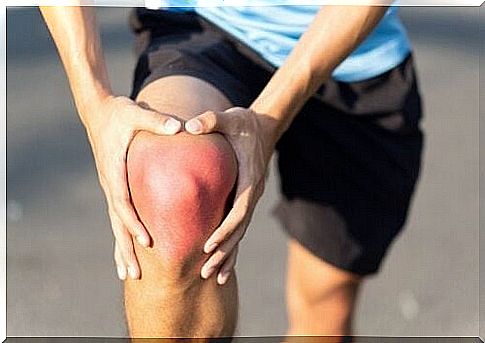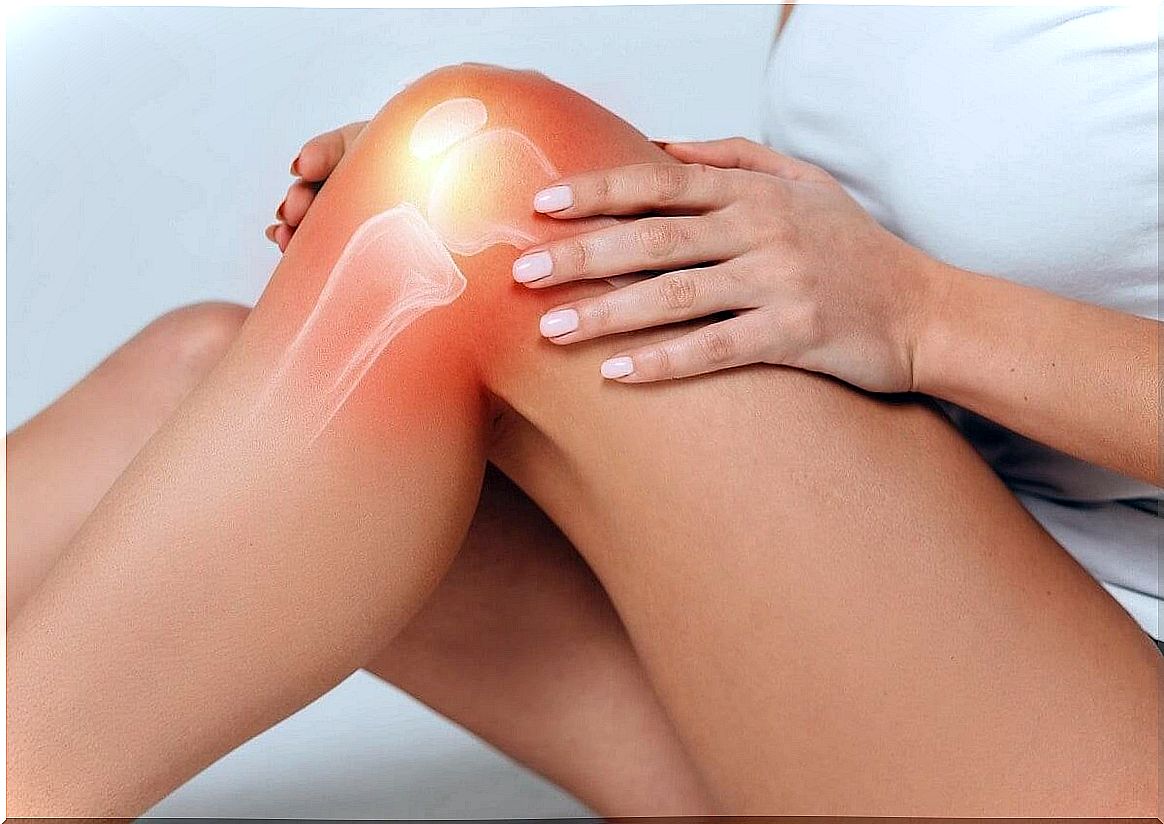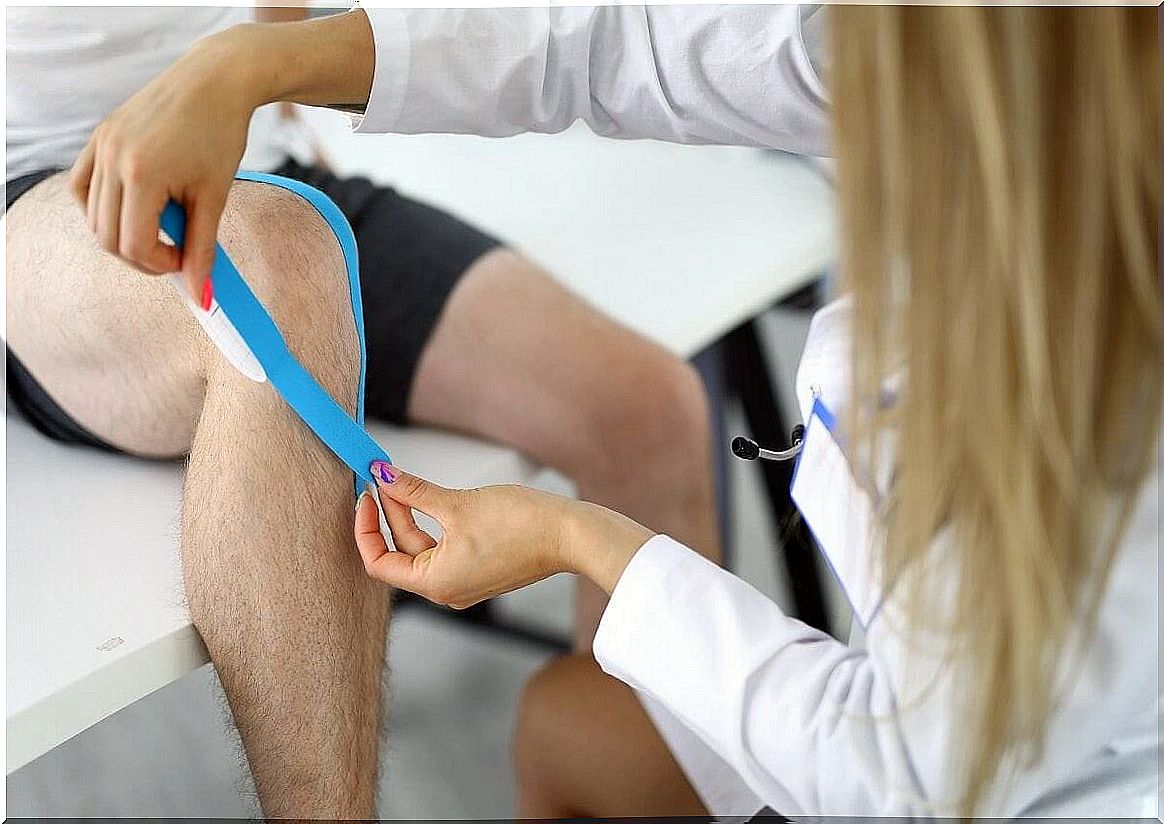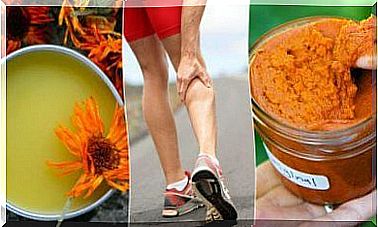Knee Sprain: Causes, Symptoms And Recommendations
A knee sprain is usually associated with exercise, but it is not exclusive to athletes. It can also arise in everyday life due to incorrect movement of the lower limbs.

A knee sprain is actually an umbrella term for other, more specific conditions that occur in that joint. As a result, it does not exist as such, since its treatment depends on the injured ligament. We are dealing with a complex region of the body, especially in terms of soft tissue.
A sprain is when the ligaments are stretched beyond what they can handle. They exceed their limit and suffer injuries, which leads to the loss of their characteristic elasticity. In the case of the knee, the cruciate ligaments (which are inside the joint), the outer or the inner collateral ligaments can be stretched.
Causes of a knee sprain
A knee sprain has multiple causes, especially when you consider that each ligament has its own mechanism by which it is injured. This prevents the cruciate ligaments from being damaged in the same way as the collateral ligaments.
Athletes are most at risk, and depending on the discipline, there is a greater or lesser risk of stretching one or the other tissue. But as we have already anticipated, this injury can also occur at home and in everyday accidents.
For example, imagine a foot caught in a loose tile, causing the lower limb to twist. In contact sports like soccer, the risk of cruciate ligament injuries is high.
Another common cause is head-on automobile accidents where extremities become trapped. In the case of the collateral ligaments, a sport like rugby is prone to sprains due to the side bumps between players.

Degree of Injury
Knee sprains are classified according to their severity. This classification is common for ligament sprains and determines the treatments.
First degree
The first-degree knee sprain is the mildest form. In general, the person with this condition has tolerable symptoms that do not go beyond mild pain and some immobility.
It is caused by the stretching of some, but not all, of the fibers in the ligament. There is also no crack, so it is unlikely that there will be a bruise in this area.
Second grade
According to the traumatological classification, this degree of knee sprain means a tear of more than half of the affected ligament. The functional impairment is moderate and the activity cannot be continued. The pain is so severe that a forced break is required.
Third degree
The most severe form is a torn ligament. Often it is a complete tear of one of the cruciate ligaments or the collateral ligaments. The situation is serious and requires surgery to repair the damage.
For the time being, the patient can no longer use his knee. He needs to rest and protect the joint so that the affected area can heal. A hematoma may appear in the injured area due to the tear.
Symptoms of a knee sprain
It can be said that pain is the defining sign of sprains regardless of which ligament is affected. What can vary, however, is the location of the discomfort and its appearance with one movement or another. The cruciate ligaments suffer from moving back and forth, while the others do so when moving sideways.
The functional restriction depends on the severity. With the lighter forms you can still walk, but no longer jog or run. From the second degree onwards, rest is generally required.
The knee and its soft tissues can become inflamed. This changes with the position the person takes. When the lower extremity is stretched and raised, the fluid is redistributed and, thanks to gravity, the area empties.
This also relieves the pain. On the other hand, if the patient does not rest, the inflammation increases and puts pressure on the nerves and arteries.
Whether or not a bruise occurs is variable. Ligaments do not have blood vessels, so tearing them does not result in subcutaneous blood flow, but the surrounding tissue can contribute. For second or third degree injuries, it is common to see changes in the color of the skin on the affected area due to blood underflow.
Treatment options
Although treatment for a knee sprain depends on the ligament affected and the severity, some measures are fairly consistent for all forms:
- Medication: Doctors will prescribe pain relievers and anti-inflammatory drugs to relieve symptoms. However, these do not solve the basic problem.
- Rest: This is one of the keys to recovery. The joint should be spared if possible in order to promote natural healing. If the rupture is complete, rest is given while waiting for the operation.
- Immobilization: A bandage can help soak up any leakage and immobilize the knee to relieve pain. In more severe cases, a rigid plaster of paris or a system with external guides is chosen to ensure stability. Another option for a first-degree knee sprain is elastic knee braces.
- Surgery: Third-degree knee sprains require surgery. The torn ligaments must be treated surgically. The trauma surgeon decides on the best technique to promote subsequent recovery. Since this is a complicated variant, it is assumed that recovery will be slow.

recovery
The recovery process after a knee sprain goes through different phases. The first is rest, which is almost mandatory for all concerned. Patients should respect this to ensure that they can restore their quality of life soon.
In either case, the affected person must take into account the slow healing. One month is the standard time, but if you have had an operation this period can double.
You may have to wait much longer to resume high-quality exercise, which involves a rehabilitation plan that can take 3 to 6 months to complete.
In physiotherapy, the kinesiologist determines the approach. Mechanical and manual maneuvers can be carried out, and ultrasound and magnetism can also be included. The patient will have at least 10 sessions.
Can you prevent a knee sprain?
In the field of sports, the prevention of training-related injuries is a topic on which there is a lot of literature. The truth is, you can prevent a knee sprain by taking precautions while exercising , warming up, and exhausting muscles .
However, there are accidents that, as the name suggests, are simply inevitable. The risk of missteps can be reduced by using suitable footwear, but this does not mean that we cannot collide with something head-on, for example.
The physical condition is also a protective factor . People with strong lower limb muscles are less likely to experience sprains because these tissues act as joint stabilizers.
If there is pain or inflammation in the knee, it is advisable to consult a doctor. We may not have noticed the first-degree sprain right away and it may be getting worse. A timely doctor visit is another way to prevent greater damage so as not to damage the ligament even more than it already is.









